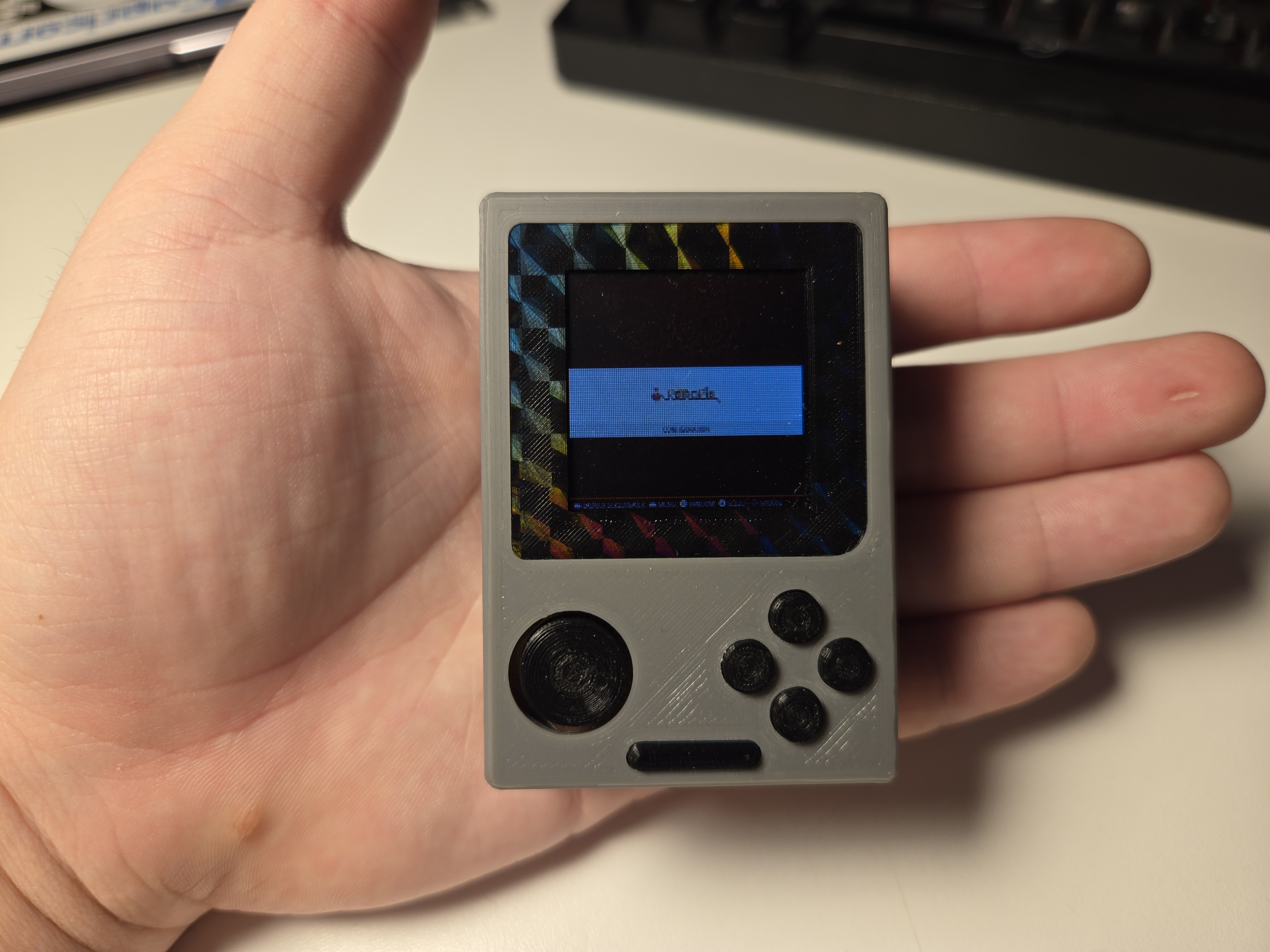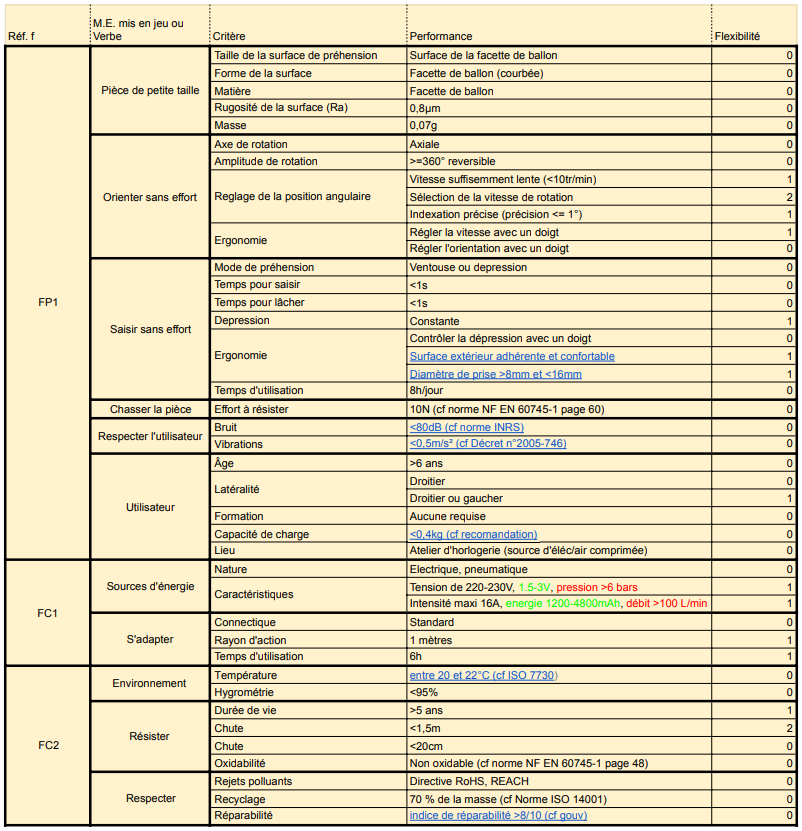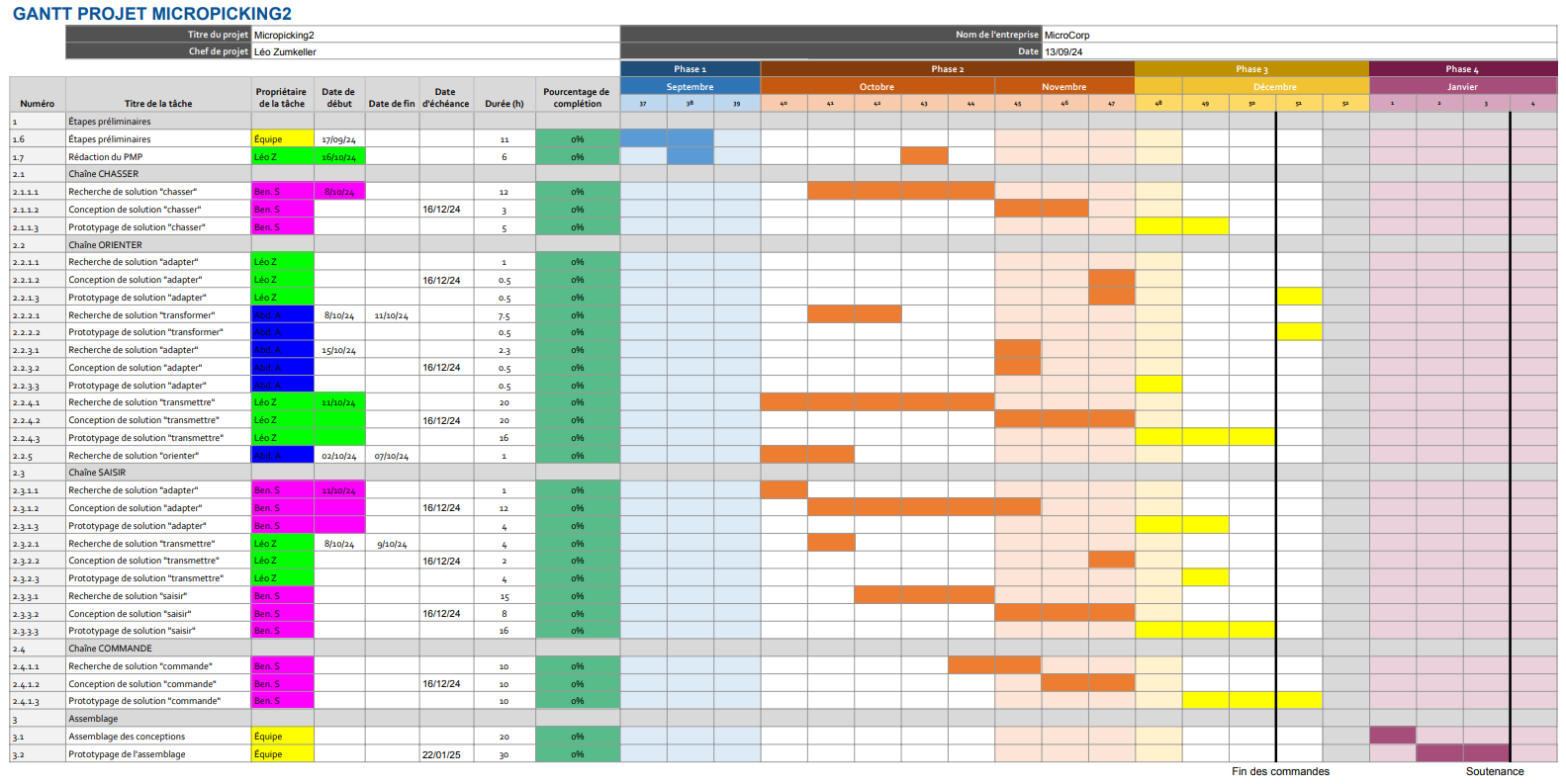
CAD, 3DP, Prototyping, Electronics, PCB
SUPMICROTECH – ENSMM | 2024–2025
Topic: Development of a handheld vacuum-based gripping tool for watchmaking micro-components

A renowned watch manufacturer was looking for a handheld tool allowing vacuum-based gripping of micromechanical components on potentially non-flat surfaces, with a high degree of orientation freedom.
The reference part: one of the faces of a micro-soccer ball developed at SUPMICROTECH. The ultimate goal was also to press-fit this part into a hollow structure.
Two student teams worked on this topic, and we named our version of the project Micropicking2.
We were a team of 3 students. I was officially the project leader, and also responsible for CAD design and prototyping due to my experience in these areas (personal projects and previous internships).
The first weeks were dedicated to analyzing the need. Our supervisors gave us an open-ended challenge, which we had to clarify and structure through multiple steps:
- Group brainstorming sessions to identify key functions and constraints (ergonomics, weight, footprint, usage environment…)
- Creation of the functional requirements specification, validated by the supervisors
- Discussions on real-world industrial challenges: repeatability, durability, integration, manufacturing, cost…
We also defined decision criteria to select technical solutions through multi-criteria matrices, helping to objectively guide our choices.
- Facilitated brainstorming sessions using visual tools (mindmaps, function sheets)
- Task allocation and structuring based on individual strengths
- Set up project tracking tools inspired by PMP (Gantt chart, milestones, session reports)
- Coordinated communication with the technical supervisor
- Drafted the project’s technical documentation


One of the key challenges was to turn a very open-ended need into clear, measurable objectives, without stifling the creativity needed for the project. Working in a small team made us agile, but we had to be particularly rigorous in justifying our decisions. Every technical choice had to rely on defined criteria, not assumptions. This was an excellent learning experience that helped me structure my thinking and argue effectively in an engineering context.
We broke down the problem into functional blocks
using a power flow diagram, each member in charge of one part.
Each block underwent:
- A state-of-the-art review (existing solutions,
available technologies)
- A comparative study (performance,
cost, size, availability)
- Some exploratory testing in certain cases
- In charge of the mechanical and pneumatic power
transmission block
- Researched a solution to control orientation
and vacuum with a single finger
- Studied mechanical orientation mechanisms,
especially to minimize backlash and avoid feedback
- Pre-selected components using catalogs and technical datasheets
This phase taught me to base my decisions on simplicity, feasibility, and robustness. Some great ideas had to be abandoned due to complexity or spatial limitations. I developed a better understanding of what it means to find a “good enough” solution — not necessarily the most advanced, but one that works well, is realistic, and meets the need.
Each validated block was translated into
integrable subsystems. We iterated first
on critical components (pump, gripping system),
then on interfaces.
We performed basic mechanical simulations
to ensure motion feasibility and assembly.
- Complete CAD modeling of the system using Creo
- Designed the housing for all components, optimizing for size, ergonomics, and serviceability
- Generated technical drawings for machining and printing

This is where I could really apply my skills in modeling and 3D printing. A key goal was to simplify assembly and maintenance without sacrificing stiffness. I learned to design with a product-oriented mindset, not just a technical one.
The final prototype came together through
component assembly, after individual testing:
- Testing the pump and pneumatic circuit
- Integrating the electrical circuit
- Ergonomic trials (handling, balance)
- 3D printing the housing (several iterations)
- Manufacturing simple mechanical parts in the
workshop (drilling, turning, wire EDM)
- Ribbon cable fabrication and wiring
- Manual adjustments and final assembly

Working at micrometric scale reminded me that every detail matters, even cable routing. I fully leveraged rapid prototyping to fine-tune ergonomics along the way, testing multiple 3D printed iterations. The workshop experience helped me validate design assumptions, anticipate tolerances, and rethink assemblies for both simplicity and functionality.
This project was a true synthesis of all the skills I developed during engineering school: project management, design, teamwork, manufacturing, electronics, and technical communication.
More importantly, it sharpened my understanding of what makes a great product: ease of use, compactness, reliability, and ergonomics — all of which I now integrate early in the design process.
Functional analysis, Project management (PMP), Structured brainstorming, Mechanical design (Creo CAD), 3D printing, Mechanical integration, Rapid prototyping, Pneumatic & mechanical component study, Technical documentation, Workshop fabrication (turning, drilling, wire EDM)